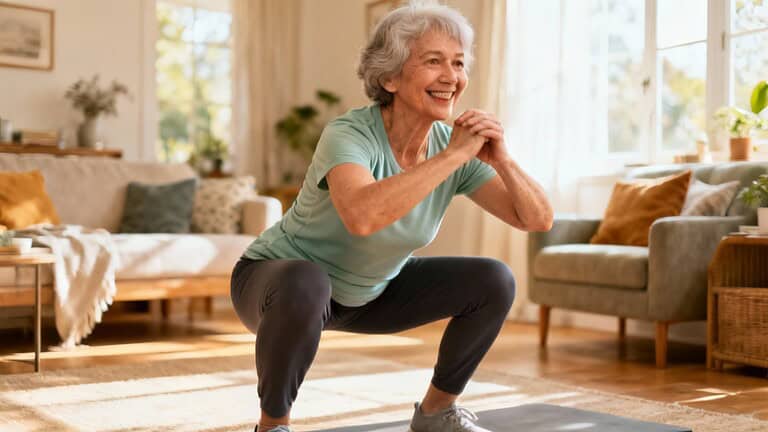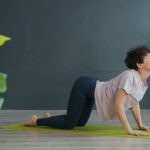Have you ever noticed how time seems to speed up once we pass 50? Your body starts responding differently—strength fades, breath shortens, and muscles lose firmness. But here’s the truth: this decline isn’t inevitable. You can reverse it and feel strong, vibrant, and confident again.
In this article, you’ll discover three foundational exercises that require no gym membership or fancy equipment. They’re adaptable to any fitness level and designed to help you reclaim your vitality.
1. Push-Ups: Build Upper Body Strength Safely
Push-ups are a timeless exercise that strengthens your chest, shoulders, triceps, and core. These muscles are essential for daily tasks like pushing a cart or getting up from the floor. Best of all, you can start with easy variations and progress at your own pace.
Adaptations for Beginners
If a full push-up feels too challenging, begin with wall push-ups. Stand arm’s length from a wall, place palms at shoulder height, and slowly bend your elbows. As you get stronger, move to inclined push-ups using a table, then knee-supported push-ups.
Proper Form Tips
- Keep your body in a straight line from head to heels.
- Position elbows at a 45-degree angle to your body.
- Inhale as you lower, exhale as you push up.
- Control each repetition—no rushing.
- Maintain a neutral neck by gazing slightly ahead.
Start with 5–10 repetitions per set, resting 60–90 seconds between sets. Listen to your body and gradually increase as you gain strength.
2. Squats: Boost Lower Body Power and Independence
Squats mimic everyday movements like sitting and standing, making them crucial for maintaining independence. They engage your thighs, hamstrings, glutes, and core, while also boosting metabolism and joint health.
Easy Variations to Start
Begin with assisted squats by holding a chair for balance. As you improve, try bodyweight squats without support. For knee sensitivity, perform partial squats—only go as low as comfortable.
Key Technique Points
- Place feet shoulder-width apart, toes slightly out.
- Imagine sitting back into a chair as you lower.
- Keep chest up and spine neutral.
- Ensure knees track over toes, not collapsing inward.
- Breathe in as you descend, exhale as you rise.
Aim for 2–3 sets of 10–15 reps, resting 90–180 seconds. You’ll notice daily activities like climbing stairs become easier over time.
3. Planks: Strengthen Your Core for Better Stability
Planks target your deep core muscles, including abs, lower back, and hips. A strong core improves posture, reduces back pain, and enhances balance—key for preventing falls as you age.
Beginner-Friendly Options
Start with knee planks or standing planks against a wall. These reduce strain while teaching proper engagement. Focus on holding the position with good form before increasing duration.
Form Essentials
- Keep elbows under shoulders and body straight.
- Engage core by drawing belly button toward spine.
- Avoid sagging hips or raising them too high.
- Relax shoulders and breathe steadily.
- Maintain a neutral spine alignment.
Begin with 3 sets of 10–20 seconds, resting 45–75 seconds. Gradually work up to 30–60 seconds as your endurance improves.
Simple Weekly Routine for Lasting Results
Consistency is key. Here’s a balanced plan to integrate these exercises into your week, allowing for recovery and progress.
- Monday: Warm up 5 minutes. Do 3 sets of push-ups, 3 sets of squats, and 2 sets of planks. Finish with stretching.
- Tuesday: Active recovery—walk 20–30 minutes or do light mobility exercises.
- Wednesday: Warm up. Perform 3 sets of squats, 3 sets of planks, and 2 sets of push-ups.
- Thursday: Another active recovery day to support joints and circulation.
- Friday: Warm up 7–8 minutes. Circuit: 1 set each of push-ups, squats, and planks with minimal rest. Repeat 3 times. End with stretching.
This routine builds strength, enhances mobility, and boosts cardiovascular health—all while respecting your body’s need for rest.
Embracing these three exercises can transform how you feel after 50. You’ll gain strength, improve daily function, and rediscover confidence.
Remember, progress comes with patience and consistency. Start where you are, celebrate small wins, and keep moving forward. Your journey to a stronger, younger-feeling body begins today.








